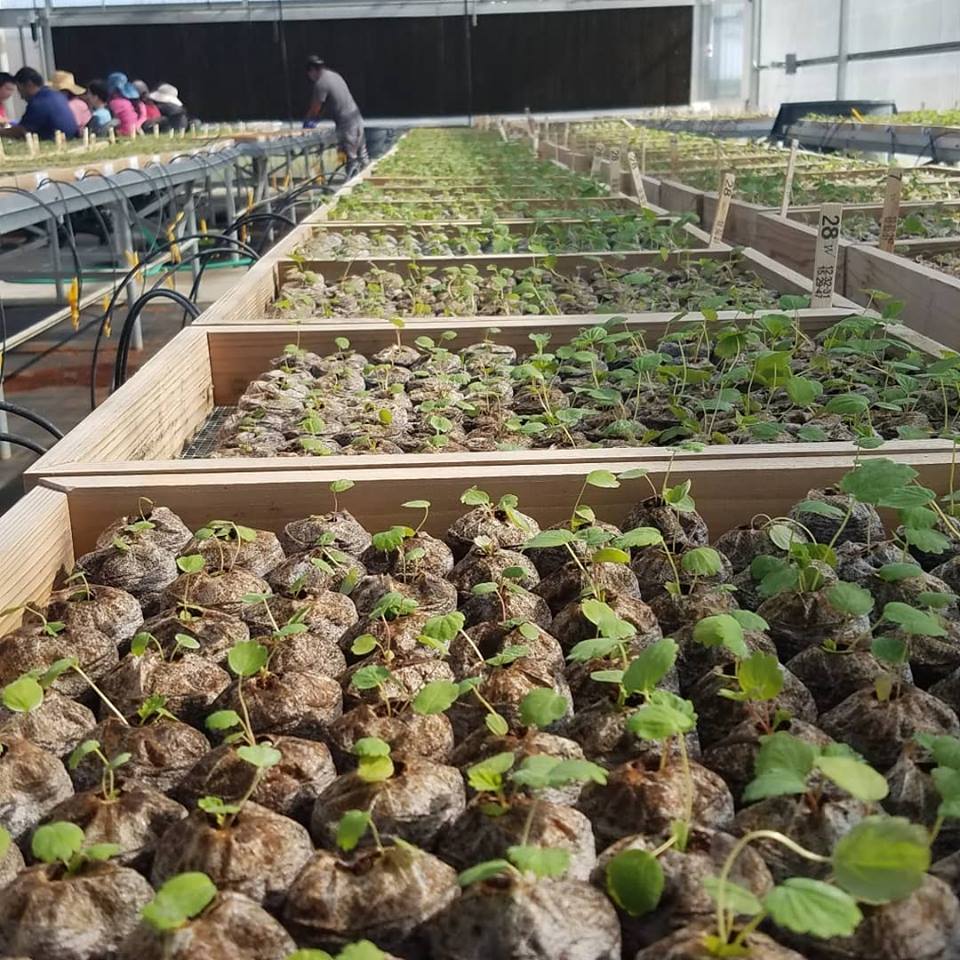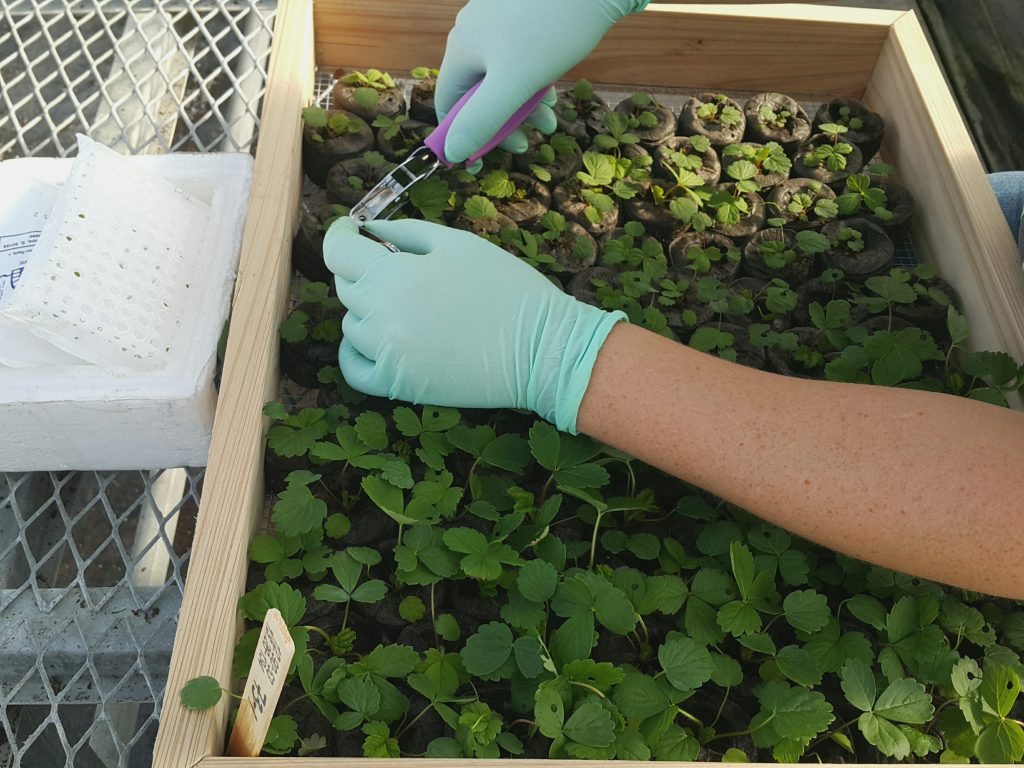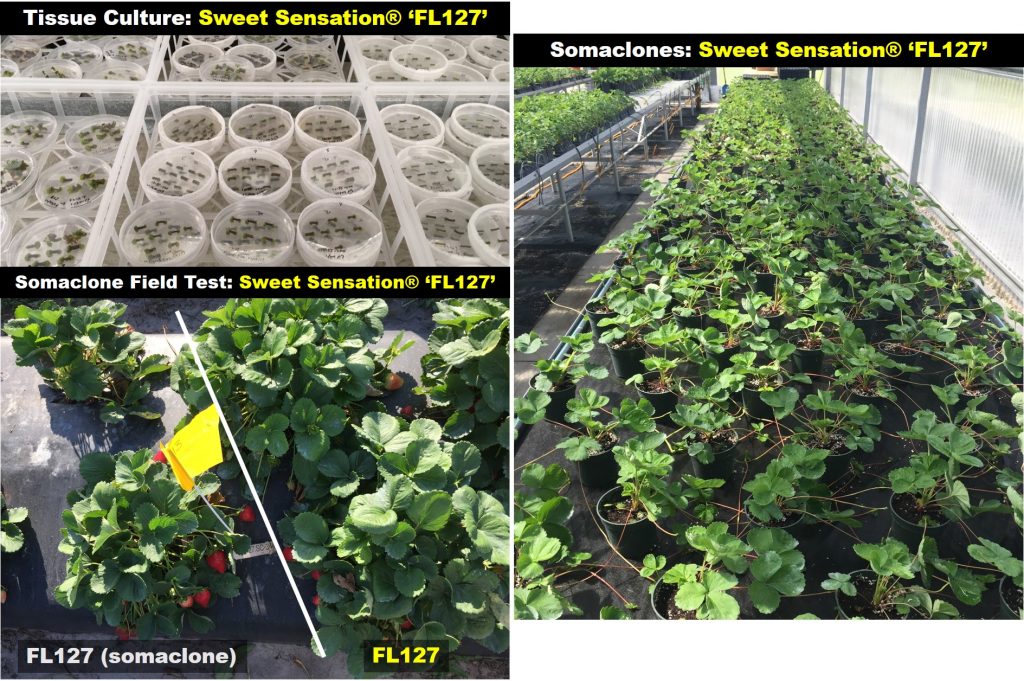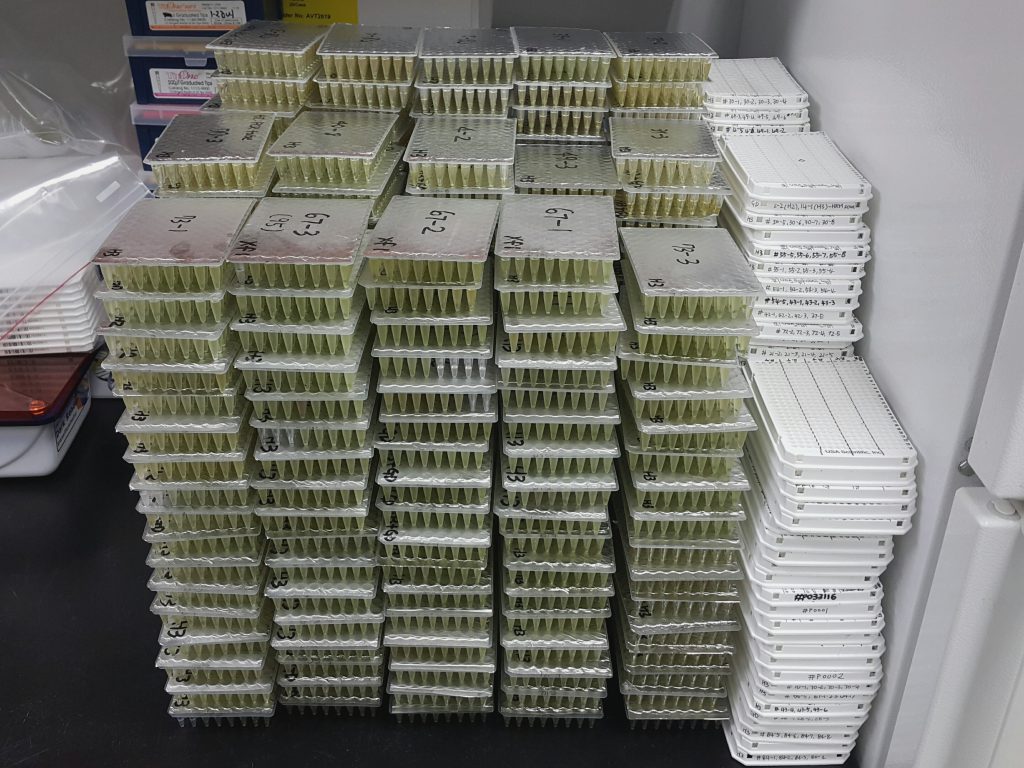By Seonghee Lee
Strawberry is a genetically complex fruit crop. The use of conventional breeding approaches to combine many important characteristics in a single variety is difficult and takes a long time. These characteristics can include disease resistance, fruit quality attributes such as sugar content or aroma, or any other trait that naturally occurs in cultivated strawberry.

Traditionally, University of Florida Institute of Food and Agricultural Sciences (UF/IFAS) strawberry breeders cross plants with desired breeding characteristics and select the best offspring over multiple generations in the field. Recently, the UF/IFAS strawberry breeding program has integrated advanced breeding technologies into conventional breeding. The use of the advanced breeding technologies can create superior strawberry varieties faster and more efficiently.
DNA MARKER TECHNOLOGY
For the last five years, the breeding program has identified several important genes controlling strawberry flavor, sweetness and disease resistance that are directly relevant to Florida growers. Researchers successfully established a system for DNA tests that can detect target genes and precisely transfer them to new varieties. Using the DNA marker technology, researchers are now able to quickly screen tens of thousands of seedlings for target breeding characteristics. This process of marker-assisted seedling selection can “stack the deck” for desirable traits prior to field evaluation and makes it possible to combine high levels of disease resistance with good fruit quality in a single variety.

In 2018, a total of 55,000 seedlings were screened by DNA tests for a combination of characteristics (multiple disease resistance, flavor and earliness of fruit). About 12,500 seedlings were retained for field evaluation in the 2018–2019 season. These tests can predict seedling traits with greater than 90 percent accuracy. Many important traits can be quickly combined together for fruit quality and disease resistance in future varieties.
CRISPR
GENE EDITING
In addition to DNA marker technology, UF researchers recently adopted the CRISPR
gene-editing technique in their breeding program. This method has been applied
in many agronomic crops and is poised to make contributions in strawberry. CRISPR
technology can speed up crop improvement and development of new varieties.

Researchers anticipate that, over the next decade, CRISPR gene-editing techniques will be used to rapidly develop elite strawberry varieties with improved disease resistance and fruit quality along with other valuable attributes. To utilize the CRISPR gene-editing technology in cultivated strawberry, breeders successfully developed the system of tissue culture and transformation for the main UF/IFAS breeding varieties such as Sweet Sensation® FL127, Florida Radiance and Florida Brilliance. These tools will be extremely valuable in the long-term efforts of the strawberry breeding program.
SOMACLONAL
VARIATION
The strawberry breeding team recently established another new technique, somaclonal
variation, to speed up the breeding process. Throughout the strawberry tissue
culture, natural variation occurs because of genetic mutation developed by in
vitro condition or by plant growth hormones in media. This technique has been
used for many other horticulture crops and cultivar development.

The plants generated by somaclonal variation are cisgenic (genes from other species are not involved) and are similar to traditionally bred plants. Breeders use this technique to improve Sweet Sensation® Florida 127 and Florida Radiance for crown root rot diseases, fruit quality, and plant shape and size.
Seonghee Lee is a research assistant professor at the UF/IFAS Gulf Coast Research and Education Center in Wimauma.
This article was featured in the September issue of VSCNews magazine. To receive future issues of VSCNews magazine, click here.









